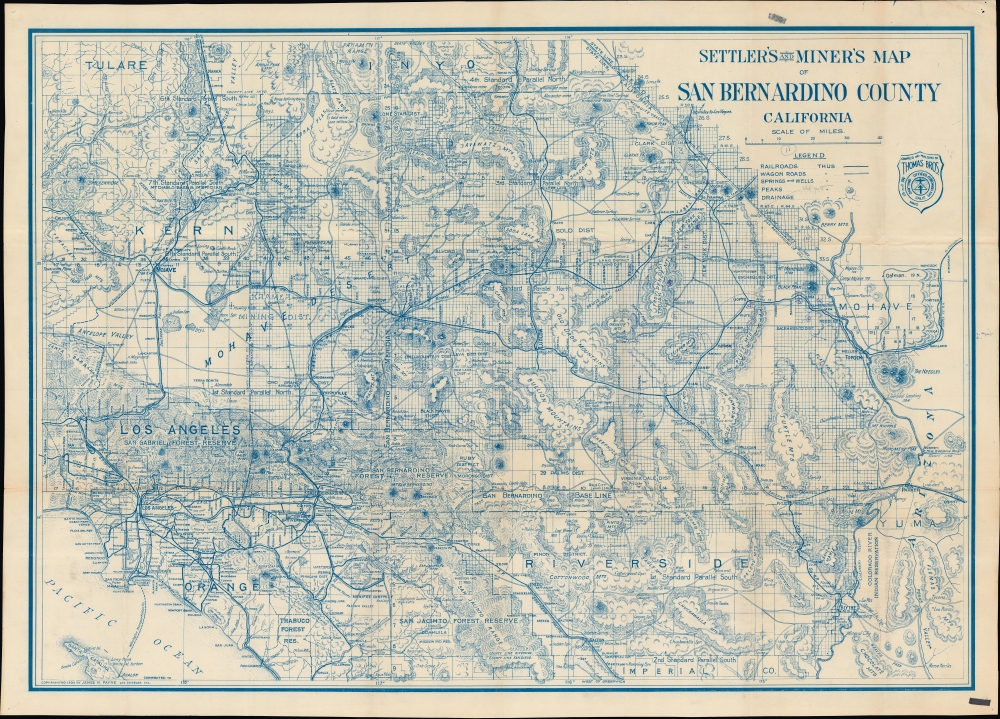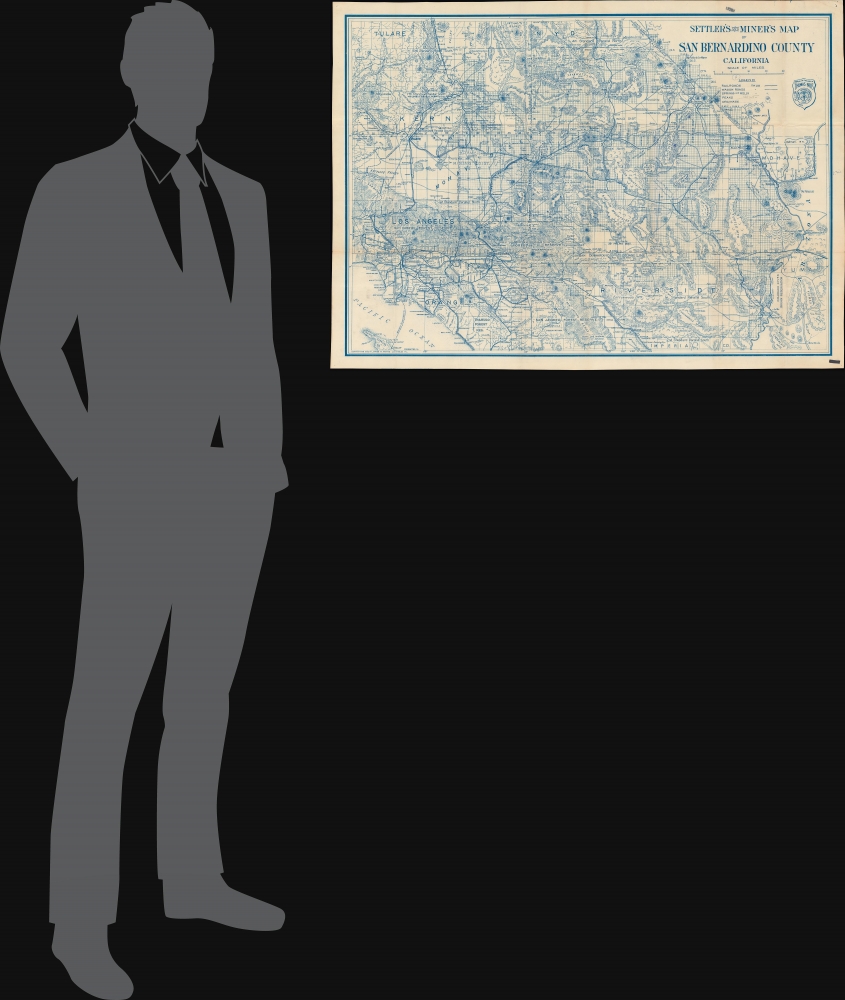1932 Payne / Thomas Bros. Survey Map of San Bernardino County, California
SanBernardinoCounty-thomasbros-1932
Title
1932 (dated) 24.5 x 35 in (62.23 x 88.9 cm) 1 : 500000
Description
A Closer Look
Coverage includes San Bernardino County, with portions of Inyo, Tulare, Kern, Los Angeles, Orange, Riverside, San Diego, and Imperial Counties (with a small sliver of Ventura County at left), as well as small portions of Nevada and Arizona. Much of the area is divided colloquially between the 'High Desert' (roughly the central portion of the map between Antelope Valley and Yucca Valley) and the 'Low Desert' (the bottom portion of the map, including the Coachella Valley to the Lower Colorado River Valley around Blythe). The upper-right portion of the map is the heart of the Mojave Desert, heading towards Death Valley and Las Vegas.Survey lines crisscross the map, along with railroads, 'wagon roads,' irrigation works (including the L.A. Aqueduct) and other features. Springs, wells, mines, waterways, and other information relevant to settlers (especially farmers) and miners are noted throughout, often with colorful names like Last Chance (Springs), Horse Thief Springs, and Confidence Mine. Several placenames retain older renderings and spellings, such as 'Palm Spring' for Palm Springs and 'Appleton Valley' for Apple Valley.
Mines, Railroads, and Wagon Roads
References to borax, silver, gold, tin, and other mines abound, especially in the Mojave Desert. The many railroads cutting through the desert often had an economic function tied to the mines, with narrow-gauge branch lines connecting mines to the main line. Until mines and railroads penetrated the region in the late 19th century, the area was considered nearly uninhabitable, especially outside of valleys where seasonal rivers might run. In the following decades, the rights of way obtained by the railroads were often repurposed for building highways.Publication History and Census
This map is copyrighted to James H. Payne and is dated 1932. It was published by Thomas Brothers. The map is rare, only being listed among the institutional holdings of the University of California Berkeley and the University of California Riverside. No known market history.CartographerS
James Henry Payne (1870 - c. 1935) was a Los Angeles-based civil engineer and cartographer who collaborated with some of the major map publishers of the era, including Rand McNally and Thomas Brothers. According to census records, Payne was born in Illinois in 1870 and appears to have begun his career as a railroad surveyor, initially for the Choctaw, Oklahoma and Gulf Railroad and then for railroads in Southern California, where he had relocated by 1907. Even when working with larger map publishers like Rand McNally, Payne's maps generally resembled survey maps, with survey lines and blue line print, giving them a distinctive style. More by this mapmaker...
Thomas Brothers (1915 - 1999) was founded by George Copleland Thomas and his two brothers in Oakland in 1915. Operating from a street corner in Hollywood, Copeland started his business by selling maps to movie stars' homes. From this, Thomas created a 'map book' / guide book institution, while carrying most of the day-to-day operating information around in his head. After George Thomas passed away in 1955, his widow hired Warren Wilson, an attorney, to straighten out the company's affairs. When it became clear that none of Thomas's heirs were interested in continuing the business, it was offered for sale. Wilson and accountant Tom Tripodic jointly purchased the company and decided to move in a new direction while 'maintaining the Thomas Brothers' tradition.' They moved the company headquarters from San Francisco to Irvine, California. The company was purchased by Rand McNally in 1999 who laid off many of Thomas Brothers' most skilled cartographers and employees in 2003 and officially closed all California operations in 2009. Learn More...




